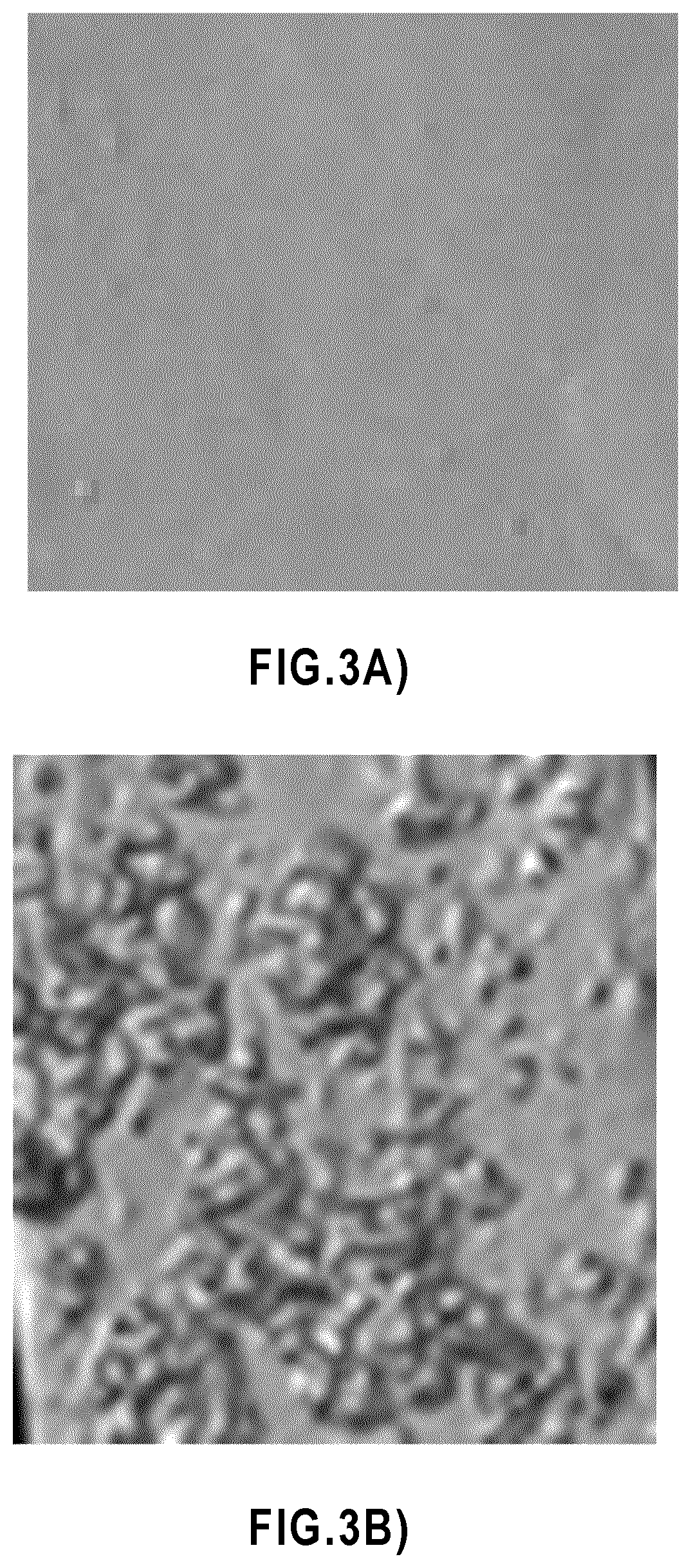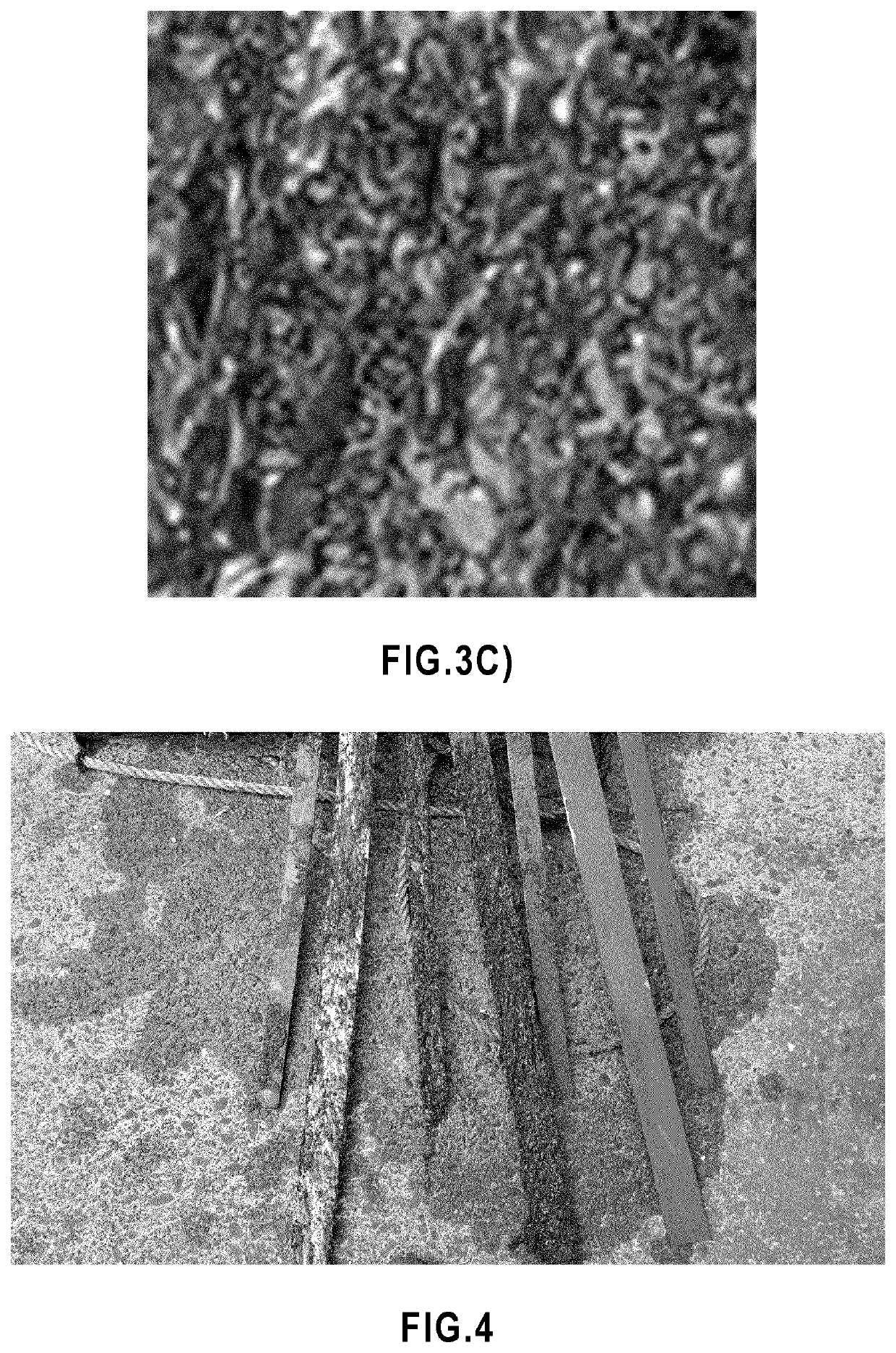Multifunctional coatings for use in wet environments
a multi-functional coating and wet environment technology, applied in the direction of antifouling/underwater paints, biocides, coatings, etc., can solve the problems of important environmental problems, corrosion occurs mainly in objects exposed to water and/or humidity, and the accumulation of unwanted materials on solid surfaces to the detriment of function
- Summary
- Abstract
- Description
- Claims
- Application Information
AI Technical Summary
Benefits of technology
Problems solved by technology
Method used
Image
Examples
example 1
on of Coatings of the Invention and Comparative Coatings
[0413]Substrates made of 316 alloy stainless-steel were used. First, the substrates were sanded, cleaned, and dried. More specifically, the substrates were sanded with silicon sandpaper 70-100 grits. Then, the substrates were washed with acetone and left to dry for 1 hour at 30° C.
[0414]Then, a set of two coatings was applied to the substrate. This first coating applied was a primer coating. This primer coating was applied in two layers up to 5 mills (127 μm) thick (dry). Two primers were tested: Intershield® 300 sold by International® and Amercoat® 235 sold by PPG®. Intershield® 300 is a pure epoxy coating sold for use as a universal primer. Amercoat® 235 is a two-component, multi-purpose phenalkamine epoxy. The second coating, applied on top of the primer coating, varied in composition as described below. This top coating was applied in the number of layers needed to achieve a total dry coating thickness of up to 14 mils (355...
example 2
esting
[0426]To determine the performances against fouling of the coatings, coated samples were exposed to fresh salt water with a medium temperature of 18° C. for up to 5 months. The samples were analyzed by macrophotography's every two weeks. Fouling extend was determined visually and rated Poor, Average, Good, or Excellent. FIG. 3 shows a coating with excellent, good, average and poor efficacy.
Efficacy Against Fouling
[0427]
Coating no.Efficacy1Average2Average3Average4Average5Average6Average7Average8Average9Average10Average11Poor12Poor13Good14Excellent15Excellent16Excellent17Excellent18Excellent19Excellent20Excellent21Excellent22Excellent23Excellent24Good39Excellent40Good41Good42Excellent43Good44Good45Good
[0428]As an example, FIG. 4 shows the degree of fouling of some samples after an exposure of 5 months. The first sample on the left side is a blank stainless-steel control sample. The next three (3) substrates (from left to right) bore a coating of International® Micron 99, a coati...
example 3
Testing
[0431]The anticorrosion performances of the coatings were tested, according to ASTM G50-10(2015), following the procedure below.
[0432]First, after the coating finished curing, the samples were cleaned using acetone and cotton rug. Then, the sample size and weight was measured. Each sample was then put in contact with a 3.5% NaCl (corrosive) solution for 1000 hours. The NaCl solution was replaced every 6 days for the duration. The samples were removed from the solution and cleaned again as described above. Then, the corroded part of the sample was removed using HCl and the weight of the samples were stabilized. The corrosion rate (in mm / year) is finally calculated using the following equation:
KWATD
in which K is the corrosion rate, W is the mass loss in grams, A is the surface area of the sample (0.01 cm2), T is the exposure time, and D is the density in g / cm3.
[0433]Further, the corrosion current density (in μA / cm2) was calculated using Tafel Slope Analysis.
[0434]The results ar...
PUM
| Property | Measurement | Unit |
|---|---|---|
| total thickness | aaaaa | aaaaa |
| total thickness | aaaaa | aaaaa |
| size | aaaaa | aaaaa |
Abstract
Description
Claims
Application Information
 Login to View More
Login to View More - R&D
- Intellectual Property
- Life Sciences
- Materials
- Tech Scout
- Unparalleled Data Quality
- Higher Quality Content
- 60% Fewer Hallucinations
Browse by: Latest US Patents, China's latest patents, Technical Efficacy Thesaurus, Application Domain, Technology Topic, Popular Technical Reports.
© 2025 PatSnap. All rights reserved.Legal|Privacy policy|Modern Slavery Act Transparency Statement|Sitemap|About US| Contact US: help@patsnap.com



